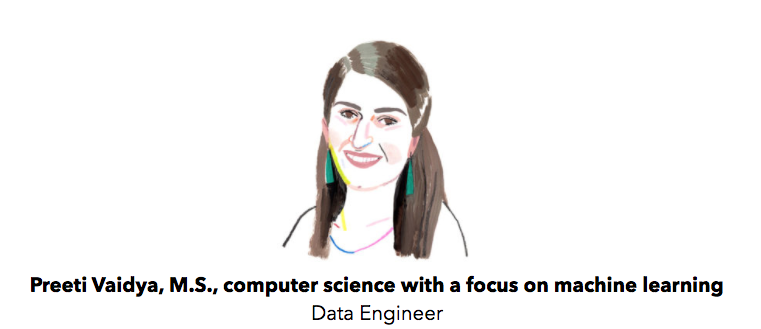Category: Data Strategy

Goldilocks Criteria: Customer Data Platforms
•
This is the second in a series of posts designed to help managers think about business requirements for selecting enterprise vendors and software. Please also check out my first post on Business Intelligence platforms. Customer Data Platforms (CDPs) inspire a lot of confusion. Best to begin with what they are and…

Goldilocks Criteria: Selecting Modern Business Intelligence (BI) Platforms
•
This is the first of a new series of posts dedicated to helping people select data tools and infrastructure. I’ve listed out the ‘perfect’ feature set for a dream product. Of course, these features rarely exist in a single solution, but if they did, I’d use it! First up: business…

Press: How Viacom uses AI to predict the success of its social campaigns
•
Digiday going deep with my colleague (and hire) Dr. Matt Moocarme on how we’re leveraging our custom data stack and artificial intelligence to create better social media posts and campaigns. Extremely proud of the team’s work and the patent we earned for this project!

In the Press: Get to Know a Few of Viacom’s Data Scientists
•
Here’s a great profile on a few of my Data Science colleagues here at Viacom. So excited to see a few of my hires (Matthew and Preeti) profiled! Viacom has a strong track record of hiring data scientists with deep academic backgrounds who have also completed business training boot camps. …

Introducing Data Science at Viacom: Where to Start?
•
In my new role as Corporate Vice President of Data Strategy at Viacom, I have joined a small group of data experts affectionately known as “data mercenaries.” Our primary focus is to explore opportunities for scaling data science and data platforms throughout the organization. With many areas ripe for data…

Utilizing Data Science to Identify Social Media Influencers: Viacom’s Success Story
•
In its inaugural year, Viacom’s Social Data Strategy team has achieved remarkable success by employing data science to discover and collaborate with social media influencers, resulting in substantial revenue growth from their massive social following of approximately one billion fans. A pivotal achievement during this journey was the development and…

First data, then vibe: How Viacom casts influencers in 90 percent of its campaigns.
•
Reposted from: https://digiday.com/sponsored/viacombcs1-008-first-data-then-vibe-how-viacom-casts-influencers-in-90-percent-of-its-campaigns/ At first glance, there’s little that sets Shaun McBride—a charismatic former skateboarder who goes by the handle “Shonduras”—apart from the millions of other social media influencers enjoying the spoils of Internet fame. But in March, Viacom’s brand studio, Velocity, anointed McBride as a creative consultant, a move…
Social media & measuring where fans will go next.
•
David Berzin, Vice President, Social Data Strategy at Viacom Talks About Staying in Step with the Social Media Landscape Reposted from http://v.viacom.com/social-media-measuring-where-fans-will-go-echo/ V by Viacom: As marketers, how should we be thinking of social media right now? David Berzin: We’re solving for two variables, really. We’re not just building out branded…

A peak into our new work environment.
•
We’re lucky. Viacom has built new, bespoke office space for our Data Strategy teams. Open floors, lots of informal gathering spaces, a record player (we nearly burnt our “purple rain” when Prince passed) and more. AdWeek featured us recently. Take a look: http://www.adweek.com/news-gallery/advertising-branding/viacom-gets-face-lift-millennial-generation-173659

Viacom’s social media “echo-system.”
•
At Viacom we’re hard at work at new tools to create, predict and measure our social media campaigns. “Viacom’s data-driven ad sales unit Vantage is upping the volume on its Echo social media product. Now, with version 3.0 of Echo, the company is offering marketing clients what it is calling an…